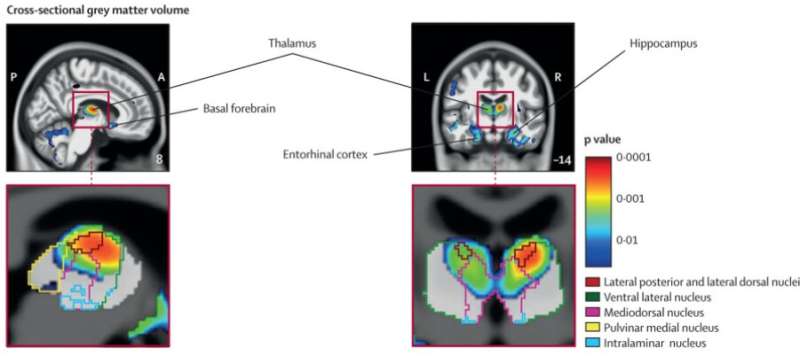July 21, 2023 report
This article has been reviewed according to Science X's editorial process and policies. Editors have highlighted the following attributes while ensuring the content's credibility:
fact-checked
trusted source
proofread
Comparing superagers to typical older adults reveals significant lifestyle and brain structure differences

Research led by the Center for Biomedical Technology, Universidad Politécnica de Madrid, Spain, has compared the brains of superagers with those of normal cognitive aged abilities in a paper, "Brain structure and phenotypic profile of superagers compared with age-matched older adults: a longitudinal analysis from the Vallecas Project," published in The Lancet Healthy Longevity. A Comment published in the same journal issue discusses the work by the team.
Episodic memory, the memory of personal life experiences, is vulnerable to age-related deterioration. Neurodegenerative diseases like Alzheimer's often lead to severe episodic memory decline.
Some older adults, called superagers, somehow resist age-related memory decline, maintaining episodic memory comparable to healthy individuals 20–30 years younger. The researchers analyzed the structural brain signatures and other factors associated with the superaging phenotype in search of what makes them so resistant.
Researchers used a subset of data from the Vallecas Project longitudinal study cohort, which includes community-dwelling individuals aged 70–85 years old without neurological or psychiatric disorders. Participants meeting the criteria for superagers (being age 80 years or older with episodic memory comparable to healthy individuals 20–30 years younger) were selected as superagers.
The study compared super agers (n=64, mean age 81.9 years) to a typical older adult control group (n=55, mean age 82.4) with age typical memory function. Various neuropsychological and clinical assessments, MRI scanning, and blood sample collection were performed during the investigation.
The two groups showed no differences in a genetic risk factors for non-familial Alzheimer's disease or blood biomarkers of dementia, indicating that the superagers and controls were not at different points of a dementia-related process.
Lifestyle factors such as physical activity, educational attainment, and socioeconomic status were closely associated with the superaging phenotype. These factors are commonly associated with age related dementia prevention or delay. Having a musical background and, perhaps surprisingly, being separated or divorced versus being married or cohabiting were associated with superagers.
While the musical background could be influencing cognitive health through training and continued practice equivalent to a mental exercise over many years, the factors involved in being separated and living alone are less clear. The necessity for self reliance could be involved, or the absence of needing to care for another who may not themselves be a superager. While not the focus of the current study, it is an intriguing correlation worth investigating further.
Physiologically, superagers were found to have larger hippocampal volumes, thicker anterior cingulate cortices, and less cortical atrophy compared to typical older adults. The superager phenotype was associated with gray matter preservation in memory-related areas of the brain and cholinergic nuclei, indicating a resistance to normal memory decline.
Superagers were found to have reduced rates of atrophy in the entire brain cortex and specific memory-related areas, such as the hippocampus and cholinergic basal forebrain. These areas are associated with memory function, and superagers' brain structures showed less decline compared to typical older adults.
Movement speed was found to be associated with better memory. Superagers demonstrated faster movement speeds, as measured by walking and finger tapping tests, compared to the control group. Mental health cues were also significant in differentiating superagers from typical older adults. Superagers showed better mental health on questionnaires for anxious state, anxious trait, and geriatric depression scale compared to the control group.
Further research is needed to explore potential mechanisms for promoting the superaging phenotype and to more thoroughly interrogate the current observational study findings in search of a causal relationship between lifestyle and late life cognition.
More information: Marta Garo-Pascual et al, Brain structure and phenotypic profile of superagers compared with age-matched older adults: a longitudinal analysis from the Vallecas Project, The Lancet Healthy Longevity (2023). DOI: 10.1016/S2666-7568(23)00079-X
Alexandra Touroutoglou et al, What is so super about ageing?, The Lancet Healthy Longevity (2023). DOI: 10.1016/S2666-7568(23)00103-4
© 2023 Science X Network




















